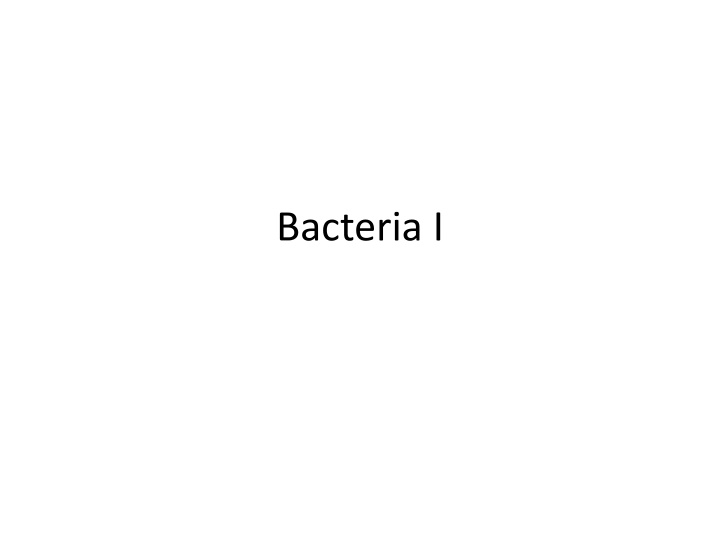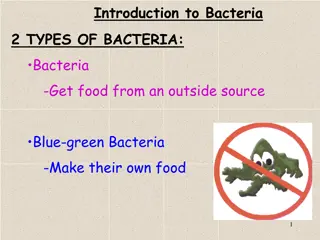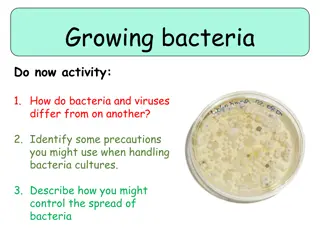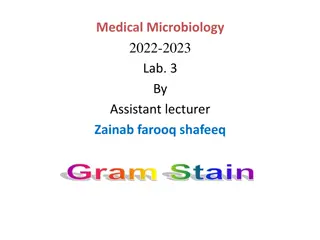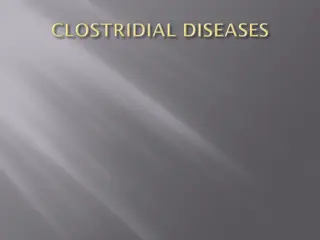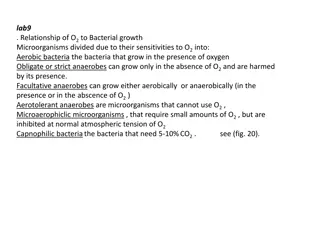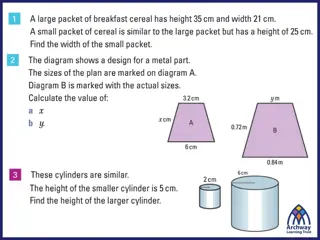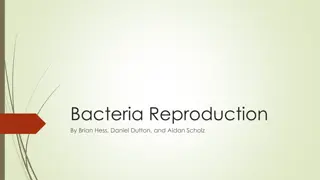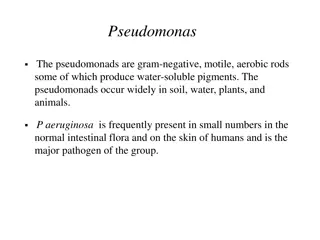Introduction to Bacteria: General Nature and Shapes
Bacteria are prokaryotic, single-celled organisms that are microscopic in size. They typically have a cell wall containing a specific carbohydrate. This content provides insights into the general characteristics of bacteria, including their common shapes such as spherical cocci, rod-shaped bacilli, spiral spirilla, and spirochetes. Additionally, it discusses the genetic variability of some bacteria, the structure of prokaryotic cells, and the functions of bacterial capsules and slime layers.
Download Presentation

Please find below an Image/Link to download the presentation.
The content on the website is provided AS IS for your information and personal use only. It may not be sold, licensed, or shared on other websites without obtaining consent from the author.If you encounter any issues during the download, it is possible that the publisher has removed the file from their server.
You are allowed to download the files provided on this website for personal or commercial use, subject to the condition that they are used lawfully. All files are the property of their respective owners.
The content on the website is provided AS IS for your information and personal use only. It may not be sold, licensed, or shared on other websites without obtaining consent from the author.
E N D
Presentation Transcript
General Nature 1) Prokaryotic 2) Single celled (some say multicellular) 3) Microscopic in size 4) Cell Wall usually present (varies, but contains carbohydrate called _____________
Common Shapes of Bacteria Spherical: cocci (s. coccus) single cells pairs = diplococci 4 s = tetrads 8 s = sarcinae chains = streptococci grape-like clusters = staphylococci
Rod Shaped Bacillus (Rod shaped) Bacillus anthracis
More common shapes Spiral = Spirilla (singular=spirillum) Spirochetes: long spirilla with many tight coils
some bacteria are genetically ____________ which means the cells can have many shapes.
Corynebacterium diphtheriae Pleomorphic species
Prokaryotic Cell Structure 1) Glycocalyx (sugar coat) If firmly attached called a Capsule If loosely attached called a slime layer
Bacterial Capsule/Slime Layer Function: protect cell from drying, chemicals, host body defenses; also helps for attachment to host cells. Increases virulence in pathogenic species Special capsule stain allows us to view.
Biofilms Slimy layers of bacteria formed by capsules Form on teeth, contact lenses, IUDs, in lungs, ear infections, other infections, shower door scum etc. Protect bacteria from drugs and body defense, 641 in text! Life cycle of a biofilm: Essay .
99% of bacteria grow in biofilms (can be 100s of cells thick)! Antibiotics, antibodies & phagocytes have difficulty penetrating Can be 1500x more resistant! And ..Biofilms MOVE!
Parts of the Bacterial Cell: 2) Flagella long, whip-like structures for motility (movement) location is important in identifying unknowns Monotrichous: one flagellum (single polar flagellum) Amphitrichous: flagella at each end of cell Lophotrichous: 2 or more flagella at one end of cell Peritrichous: flagella all over the cell Atrichous (without flagella) too thin to see with light microscope to view, thicken with flagella stain or use electron microscope
3)__________ filaments similar to flagella, but under outer membrane (sheath) of gram negative cell wall (endoflagella) in spirochetes only provide drilling motion (figure 4.10)
4) ___________ Short, finger-like projections for attachment Important for virulence
5) Parts of the Bacterial Cell: Pili (pilus) Longer than fimbriae Usually 1 or 2 per cell Some pili used by bacteria in a mating process to exchange DNA Sometimes called conjugation (sex) pili Motility now associated with pili Twitching Gliding
Bacteria II 6) Cell Wall
Parts of the Bacterial Cell Cell wall : a thick, tough layer forming the shape of the cell function: protection Structurally different in gram + versus gram - bacteria
Parts of the Bacterial Cell The gram positive cell wall: one thick layer of _______________ (sugars and amino acids bonded into one macromolecule; a very tough material)
Gram negative cell wall The gram negative cell wall: two layers thin inner layer of peptidoglycan thicker outer membrane of protein and fat
Why should we know gram + & - ? Why is it important to know if a bacterial pathogen is gram positive or negative? one of the important characteristics when identifying the bacterium one of the important characteristics when choosing the best control method...: !
The gram stain primary stain: crystal violet all bacteria stain violet _________ (agent that fixes the stain into the cells): aqueous iodine solution cells become darker violet
gram stain, continued decolorization: alcohol (95% ethanol) or an acetone/alcohol blend only the gram negative cells decolorize gram positive remain violet Counterstain:____________ gram negative cells stain red gram positive remain violet (Purple = Postive!)
steps in gram stain What would you see at this point!?
Plasma membrane cytoplasmic (plasma) membrane also called cell membrane ultra-thin layer of fat and protein
phospholipids Polar Head = Hydrophillic NonPolar Tails = Hydrophobic
detail of _________________ of plasma membrane a living, functioning part of the cell ______________________(selective permeability)
plasma membrane a vulnerable part of the cell easy to damage with heat or chemicals
Solution Solute Solvent (usually water)
Cell Membrane Tonic
Things Can/Cannot go through: *Can Go Through: Small, uncharged molecules (CO2, O2) Small, polar molecules (H2O) Large non polar molecules (Steroids)
Transport Passive Does not require energy Dialysis Simple Diffusion Osmosis Facilitated Active Requires Energy (Na+/K+ Pump)
8) ____________ The cytoplasm (cell fluid) semi-liquid contents of the cell complex mixture of chemicals water protein many other chemicals forms a colloidal system two states, sol and gel
Cytoplasm: a colloidal system ___: water continuous ____: protein continous vulnerability: can permanently convert sol to gel with heat or chemicals
8A Stuff in the cytoplasm: Ribosomes ribosomes: bodies within the cytoplasm that function in protein synthesis Composed of 2 subunits = 70 S (prokaryotic size) S=Svedberg units of sedimentation with centrifugation Consists of protein and ribosomal RNA (rRNA)
8B. ___________ inclusion bodies: store nutrients (starch, glycogen, fats) for later use during periods of starvation Could store iron oxide or phosphate depending on cell.
